SCULPTURE OBJECTS & FUNCTIONAL ART FAIR (SOFA: NEW YORK) PRESENTS LEADING CONTEMPORARY ASIAN ARTISTS WHOSE WORK HONORS EASTERN TRADITIONS
- NEW YORK, New York
- /
- March 05, 2012
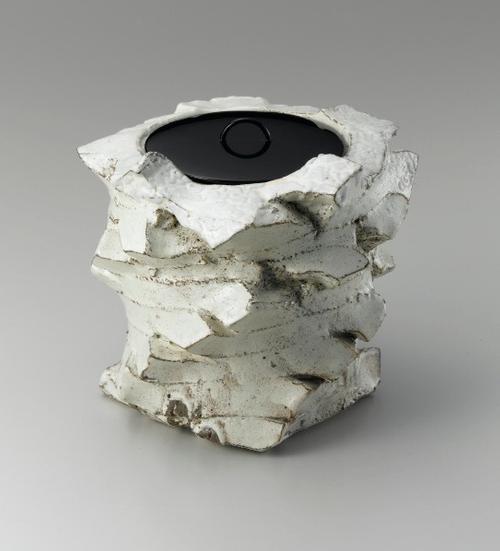
At this year’s four-day Sculpture Objects & Functional Art Fair (SOFA NEW YORK), several top galleries will show outstanding art by contemporary artists whose work pays tribute to traditional Asian artistic expression. Time-honored techniques in ceramics, bamboo plaiting, and textiles lie at the foundation of cutting-edge art made by internationally recognized artists hailing from China, Japan, and Korea—all showing their work at SOFA for the first time.
Celebrating its 15th Anniversary, SOFA NEW YORK 2012 will open April 20 and run through April 23 at New York City’s Park Avenue Armory, Park Avenue at 67th Street. Of the 50 international galleries that will present studio art and design for sale, the five below represent Asian artists whose contemporary artworks are grounded in centuries-old Eastern tradition.
• Erskine, Hall & Coe of London represents a number of international ceramic artists, foremost among them, Shozo Michikawa. After first earning a degree in economics and working in a Tokyo office, Michikawa discovered an affinity for ceramics in a continuing-education evening class, prompting a move in the late ’70s to Seto, a city boasting one of the six ancient furnaces of Japan. In the years since—at numerous exhibitions in Japan, France, the United States and the United Kingdom—Michikawa’s exceptionally detailed ceramics have been esteemed for the way they are made: by subtraction of form.
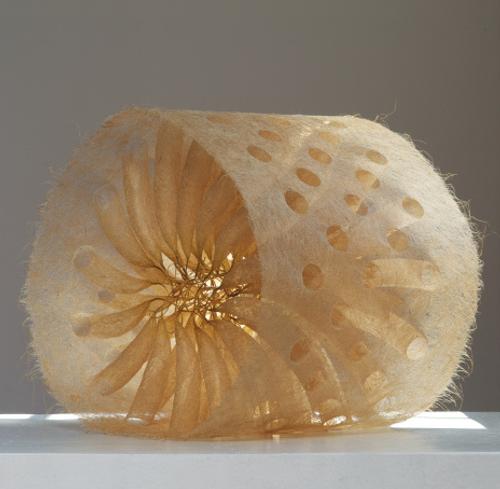
• Wilton, Connecticut-based browngrotta arts will represent several artists including Japanese fiber artist Naoko Serino. Serino is a textile pioneer who uses raw jute—commonly used for making rope—to create intricate, airy sculptures that resemble microscopic plant cells, embryos and cocoons. Serino explores the myriad ways in which light and space can enter into jute’s spectacularly soft, rhythmic forms. “For Generating-3,” recalls the artist, “I was taken by the strength, beauty and endurance of a philodendron bulb that I tended for 22 years before it bloomed—and then the bloom lasted for just one day.” Also at browngrotta arts will be Chang Yeonsoon, honored by the National Museum of Contemporary Art in 2008 as one of the Korean Artists of the Year. Yeonsoon describes his Matrix series, constructed of indigo-dyed abaca fiber, as “derived from the Oriental perspective that observes the human mind and body as unified, rather than two separate objects.” Visitors to the browngrotta arts display will also see ceramics by Yasuhisa Kohyami, a pioneer in reviving the tradition of Shigaraki ceramics, ancient Japanese wares from the Jomon Period (8,000 B.C. - 300 B.C.). To bring back the techniques of Shigaraki, Kohyami constructed an anagama kiln in 1968—the first such kiln built since medieval times. Kohyama’s work is in the permanent collection of the Metropolitan Museum of Art and many other museums.
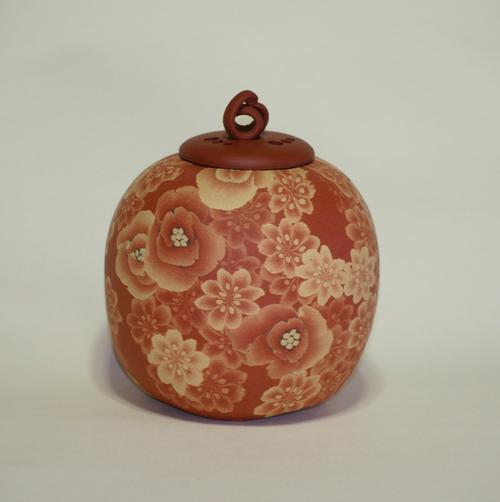
• New York-based Dai Ichi Arts will showcase Ito Sekisui V, who was designated a Living National Treasure by the Japanese Government in 2003. Ito also is famous for anagama firings in a reduction mode to bring about the black and red contrasts that he is so well known for. The first in his family to get a formal education, Ito graduated from the Kyoto Technical University with a degree in ceramics in 1966. In 1972 his work was accepted into the elite Japan Traditional Arts and Crafts exhibition and the following year, he won the grand prix in the 2nd Japan Ceramic Art exhibition. He took the name Sekisui V (honoring the Mumyoi Pottery Sekisui Kiln in the town of Aikawa on Sado Island) in 1977. Around 1980, he started creating his masterful neriage vessel forms, which Dai Ichi will offer at the fair. Renowned Asian arts critic Robert Yellin (Japan Times) said, “Ito’s mumyoi work, with its brilliant red and black contrasts, is one of the hidden treasures of Japanese yakimono. And on top of that he arguably makes the best neriage marbled wares in the world that I’ve seen, certainly his is THE BEST in Japan.”
• New to SOFA NEW YORK is the Mindy Solomon Gallery of St. Petersburg, Florida, which will present contemporary ceramics by Korean artist Kang-Hyo Lee. Lee studied the making of Ongii wares (long slabs of clay placed on edge) with master ceramist Mangyang Li, and today works in the traditional Korean Punchong style, throwing his often large pots on a traditional wooden momentum wheel and then firing them in anagama kilns. After applying the slips with strong brush strokes and finger marks, Lee paints his pots with Hwa-jang soil on top of dark red, iron-rich Onggi soil. Mindy Solomon will also represent Korean artist Ree Soo Jong, who manually kneads soil into dynamic forms, revealing a raw and unprepared surface.
• TAI Gallery of Santa Fe, New Mexico will present an outstanding selection of Japanese bamboo art including bamboo and lacquer vases by Fujinuma Noboru, whose work was recently exhibited at the Art Institute of Chicago. The gallery will also present works by Syoryu Honda, known for undulating sculptures that reflect the artist’s fascination with line, volume, and space. A finalist for the Cotsen Bamboo Prize in 2000, 2002 and 2004, Hondo is also a master at tight ajiro plaiting, a technique he adapted from generations of Japanese bamboo boxmakers. His work is part of the permanent collections of the Museum of Arts and Design, the San Francisco Asian Art Museum, the Boston Museum of Fine Arts, the Mint Museum and the Ruth and Sherman Lee Institute for Japanese Art.
• New York-based Dai Ichi Arts will showcase Ito Sekisui V, who was designated a Living National Treasure by the Japanese Government in 2003. Ito also is famous for anagama firings in a reduction mode to bring about the black and red contrasts that he is so well known for. The first in his family to get a formal education, Ito graduated from the Kyoto Technical University with a degree in ceramics in 1966. In 1972 his work was accepted into the elite Japan Traditional Arts and Crafts exhibition and the following year, he won the grand prix in the 2nd Japan Ceramic Art exhibition. He took the name Sekisui V (honoring the Mumyoi Pottery Sekisui Kiln in the town of Aikawa on Sado Island) in 1977. Around 1980, he started creating his masterful neriage vessel forms, which Dai Ichi will offer at the fair. Renowned Asian arts critic Robert Yellin (Japan Times) said, “Ito’s mumyoi work, with its brilliant red and black contrasts, is one of the hidden treasures of Japanese yakimono. And on top of that he arguably makes the best neriage marbled wares in the world that I’ve seen, certainly his is THE BEST in Japan.”
• New to SOFA NEW YORK is the Mindy Solomon Gallery of St. Petersburg, Florida, which will present contemporary ceramics by Korean artist Kang-Hyo Lee. Lee studied the making of Ongii wares (long slabs of clay placed on edge) with master ceramist Mangyang Li, and today works in the traditional Korean Punchong style, throwing his often large pots on a traditional wooden momentum wheel and then firing them in anagama kilns. After applying the slips with strong brush strokes and finger marks, Lee paints his pots with Hwa-jang soil on top of dark red, iron-rich Onggi soil. Mindy Solomon will also represent Korean artist Ree Soo Jong, who manually kneads soil into dynamic forms, revealing a raw and unprepared surface.
• TAI Gallery of Santa Fe, New Mexico will present an outstanding selection of Japanese bamboo art including bamboo and lacquer vases by Fujinuma Noboru, whose work was recently exhibited at the Art Institute of Chicago. The gallery will also present works by Syoryu Honda, known for undulating sculptures that reflect the artist’s fascination with line, volume, and space. A finalist for the Cotsen Bamboo Prize in 2000, 2002 and 2004, Hondo is also a master at tight ajiro plaiting, a technique he adapted from generations of Japanese bamboo boxmakers. His work is part of the permanent collections of the Museum of Arts and Design, the San Francisco Asian Art Museum, the Boston Museum of Fine Arts, the Mint Museum and the Ruth and Sherman Lee Institute for Japanese Art.










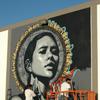

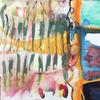
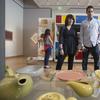


100x100_c.jpg)